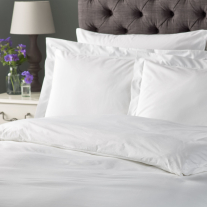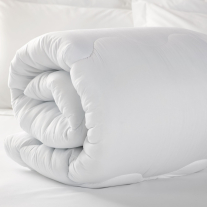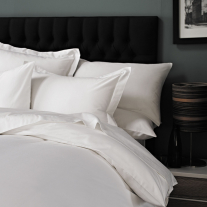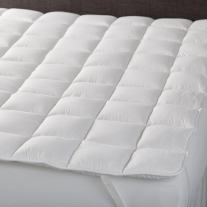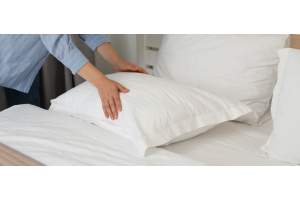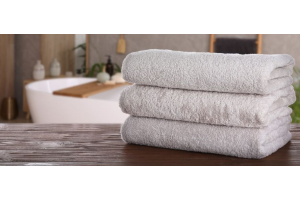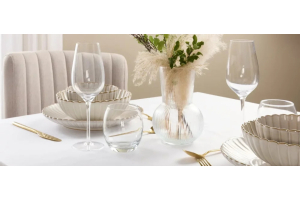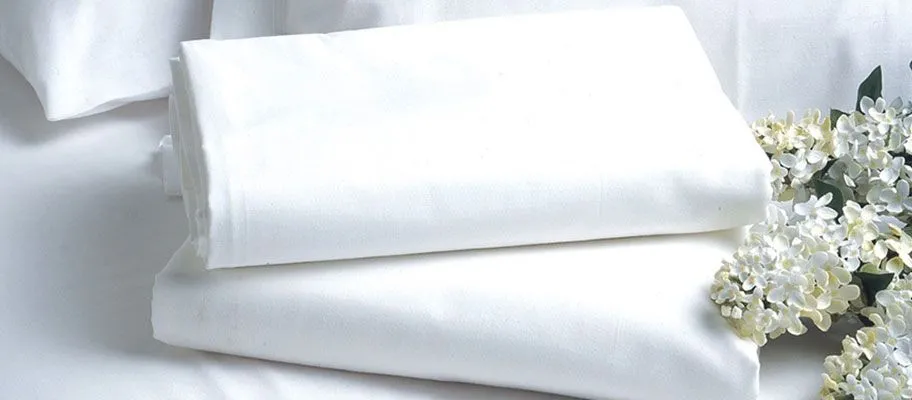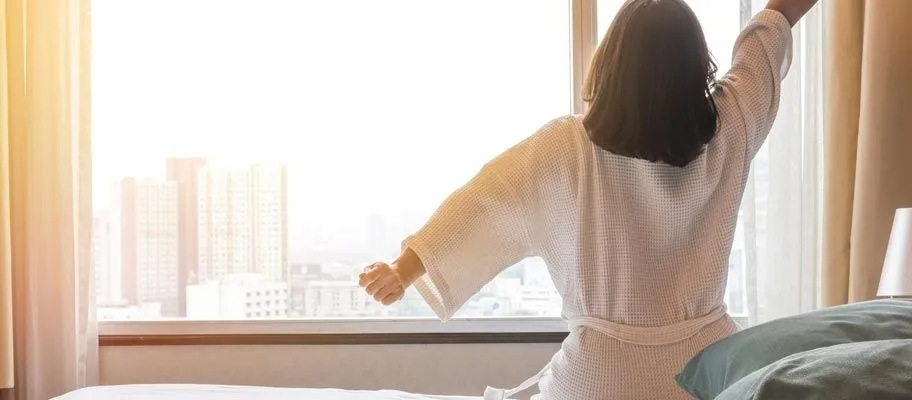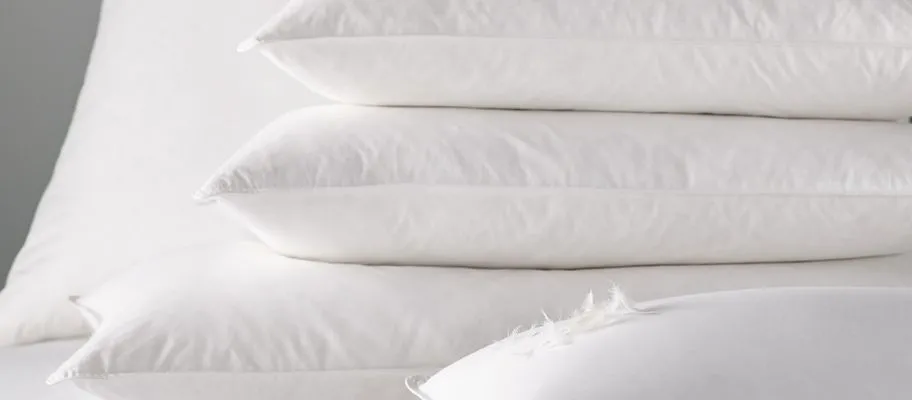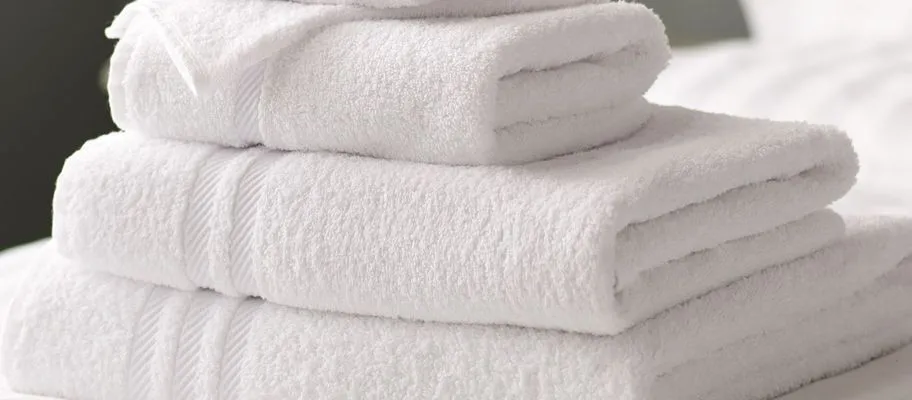We use cookies to give you the best possible experience. To accept cookies continue browsing, or view our Cookies Policy to find out more.
Debunking Some Common Myths About Hotel Bedding
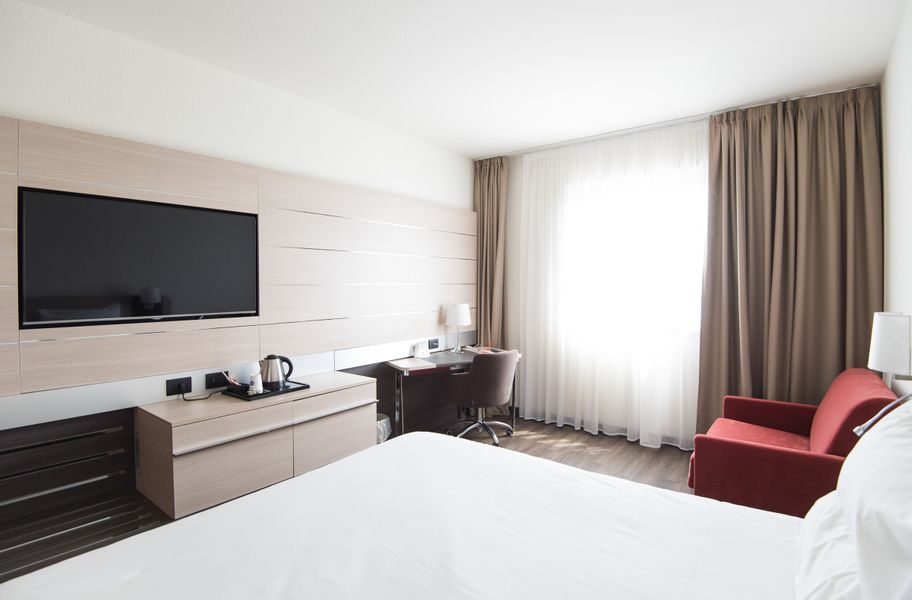
The Internet is probably the most important invention that humanity has ever conceived, but the Internet also has the downside of making it extremely easy to create false information and be able to spread it around the world in a flash. As such, we’re always fielding questions from customers that are based on something they read elsewhere on the Internet and, sometimes, the information they ask about isn’t true.
Sometimes this information is based on simple mistakes, but other times unscrupulous manufacturers can claim something is true just to push more sales. Here at Vision Linens we’ll always be up front about everything we do and be 100% honest in our answers to any questions you wish to ask us about. In this article we’ve addressed some common hotel bedding myths. Hopefully, you’ll come away being able to spot the myths from a mile away.
Myth 1 – A higher thread count means better quality bedding
It’s commonly said that the higher the thread count, the better the quality. While thread count (which is the number of threads woven together per square inch of fabric) is a key factor in bedding, it’s not the only factor that matters when you’re looking for quality bedding. Fibre content and construction are also key factors to look at. A 400-thread count sheet can be far better than a 1,000-thread count sheet, and there’s good reason for that.
Manufacturers twist thinner strands of fabric together (known as ply's) and count that as one yarn. For example, if you have a single thread that’s four-ply's twisted together it can be counted as one thread, while another manufacturer may call that four threads. You want to look for bedding that’s between 300-600 thread count (although a 200 thread count 100% cotton duvet cover can still offer exceptional comfort). But the quality of the material used is more important than the thread count.
A 400 thread count 100% cotton sheet can feel far softer than 600 thread count 100% polycotton sheet. Anything above 1,000 is pure fantasy and can be less durable than lower thread count bedding as it tends to be made up of multi-ply threads of lower quality cotton fibres twisted together, giving reduced strength and a coarse feel. Lower thread count bedding made from a higher quality fibre will feel softer and last longer than higher thread count bedding that uses a lower quality fibre.
Myth 2 – All types of cotton are the same
While all types of cotton share the same traits of keeping moisture away from your skin and being less likely to stain than polyester blends, long-staple cotton does make for bedding that’s noticeably softer. These are also less likely to pill and lint over cotton made from shorter fibres.
The weave of the bedding will also affect the way it feels. Plain weave cotton, which is woven from an equal number of vertical and horizontal yarns, is the least expensive. Percale cotton is a more upscale weave that has a crisp feel and a longer, more durable life. You’ll find that percale thread counts are 180 or higher.
Sateen cotton has more vertical than horizontal yarns. This results in a softer, smoother, and shinier fabric, but it is more likely to pill and tear than a plain weave. You’ll also be able to find jacquard and damask weaves, which feel more textured and are as durable as plain weaves but are more expensive.
Myth 3 - Firm mattresses are better for a bad back
It’s the opposite. Sleeping on a firm mattress can cause more aches and pains on pressure points across your back. However, a mattress that’s too soft can also be an issue, as you could sink so deeply that joints become twisted and more painful throughout the night.
The ideal mattress is somewhere in between, so a medium-firm mattress could be more comfortable as it allows the shoulder and hips to sink into the mattress slightly, but not too much that it becomes uncomfortable after an hour or two.
No mattress is ideal for everyone. You’ll want to find a supportive mattress that suits your unique body shape and posture. Just bear in mind that when you test a mattress in a shop, it may immediately feel comfortable, but this may not necessarily mean you’re going to get the best night’s sleep.
If your mattress isn’t working for you, but you don’t want to splash out on a brand-new mattress then a mattress topper is an excellent solution.
When it comes to the hospitality industry, it’s worth noting that even five-star hotels may not use the best quality mattresses.
Myth 4 - The heavier your duvet is, the warmer it is
There are two types of duvets that you’ll always see during your search: lightweight and heavyweight duvets. While lightweight duvets may sound like they’ll be thinner and, therefore, give less warmth, all it means is that the filling doesn’t have a heavy weight that you’ll feel across your body. Heavyweight duvets give a more secure, wrapped up feeling and a comforting weight, but both can be just as snug.
The warmth of the duvet depends on its fill power, which helps determine the insulating ability of the duvet. A high fill power means that the filling of the duvet is airy and light but also provides good insulation and warmth. The material that makes up the filling is also important. Synthetic duvets tend to be lightweight, although duvets that give the feeling of natural filling do exist, while heavyweight duvets tend to have natural fillings such as duck or goose feather.
Heard of any other hotel bedding myths? Just let us know and we’ll be happy to address them!
For more on picking the best hotel bedding, read our guide on the topic.


